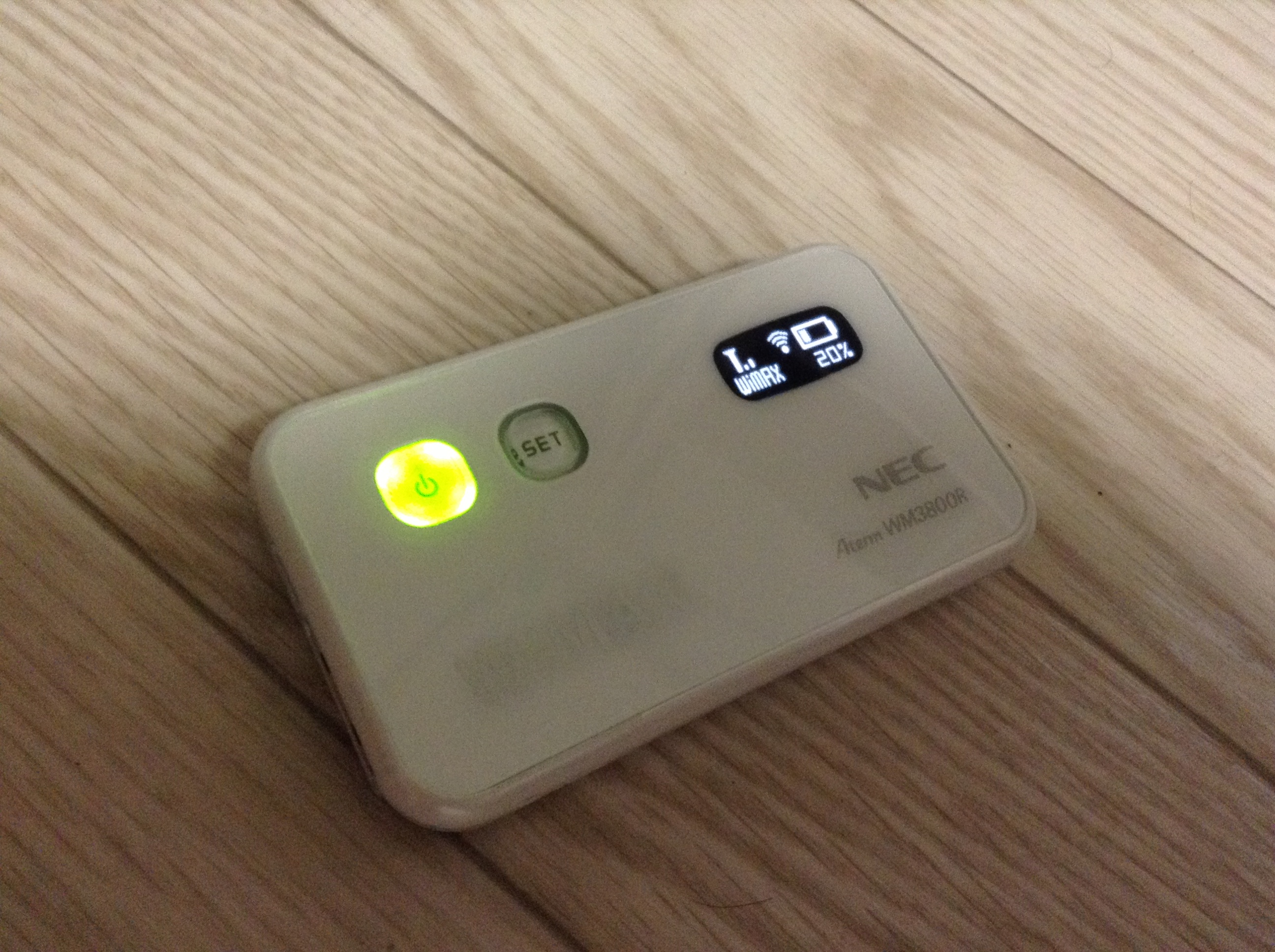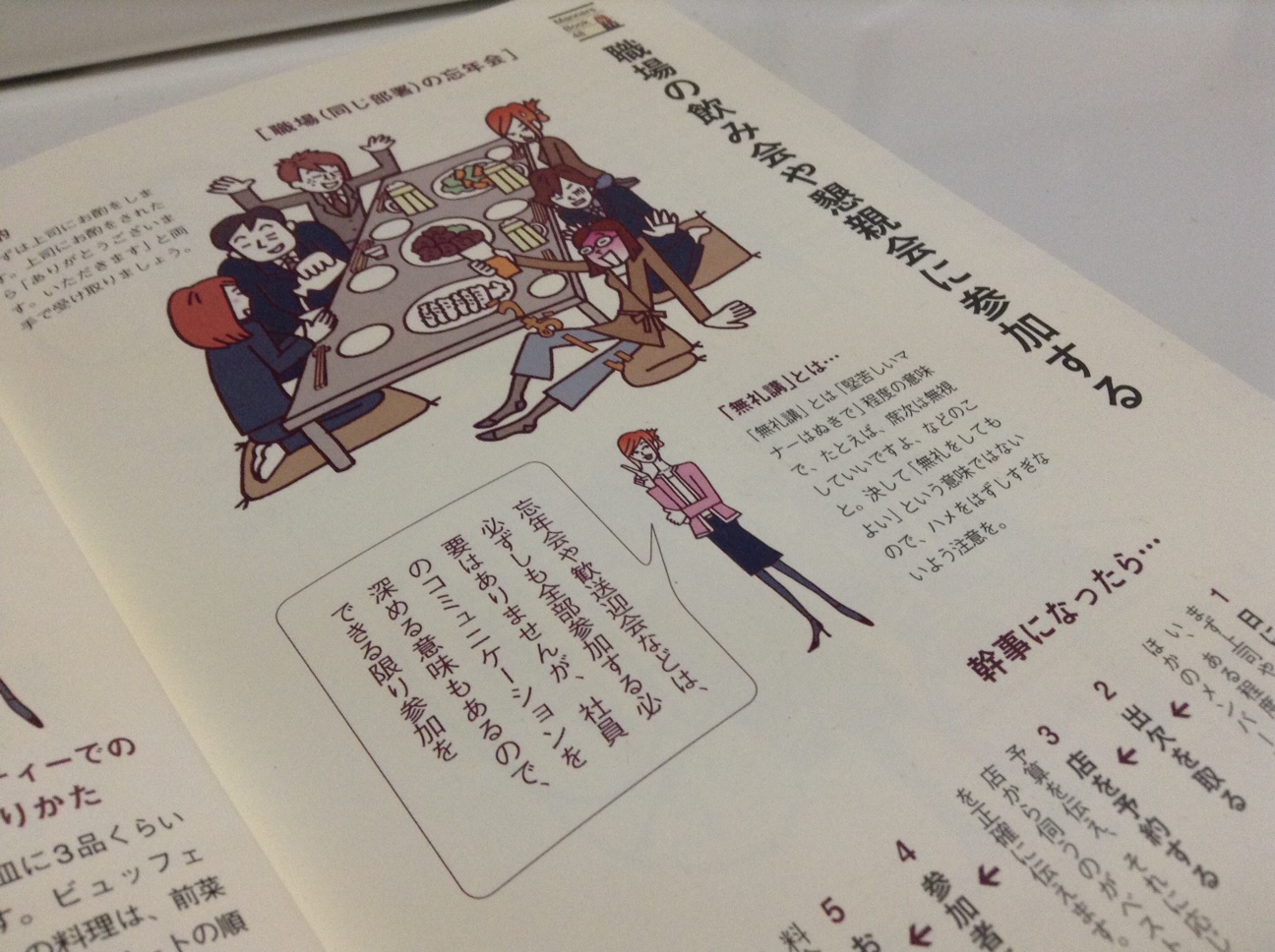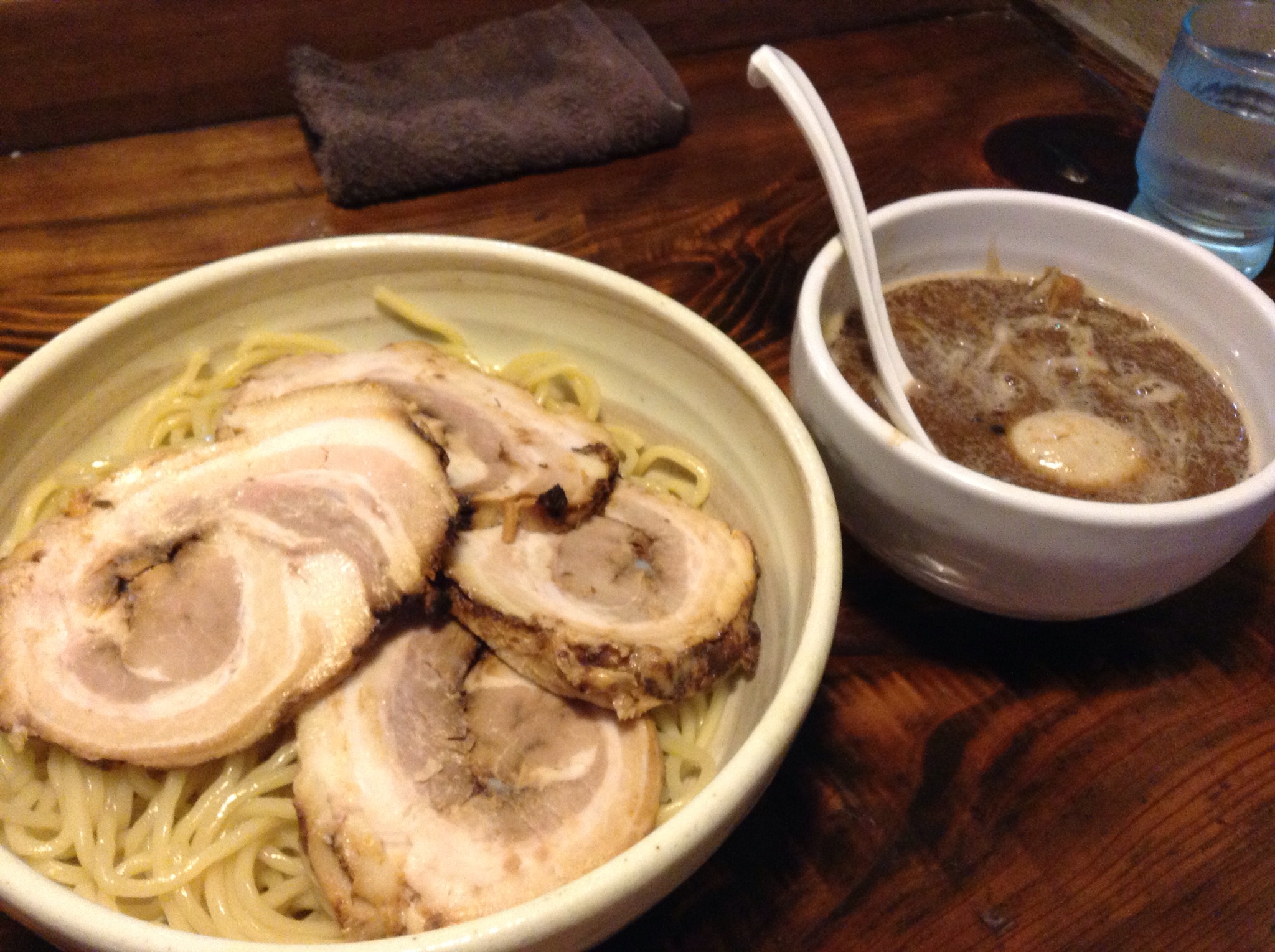
The Salaryman Diet
When I first came to Japan I was shocked by all the delicious food. I knew people who had been to Japan raved about how amazing everything was, but being in the UK with very limited knowledge of Japanese food, when someone said ‘Japan’ and ‘food’ in the same sentence all I could think of was sushi and noodles. Yeah I know, me and 99% of the the non Japanese population. Furthermore despite the fact that I had been studying Japanese at university and held an interest in Japan since 15 I was actually very ignorant towards Japanese foods.
I didn’t know what takoyaki, okonomiyaki or oden was. Now for the average Joe not knowing these foods isn’t anything special, but for a self confessed Japan-aholic this is kinda embarrassing. The flip side was when I came in September 2010 for the first time I was blown away by pretty much everything. Biggest surprise being that Japanese curry doesn’t taste a thing like the Indian curry I had been pretty much brought up on (my family LOVES CURRY!).
My class and I were always told before going to Japan that we would lose weight. That every year people go and come back lighter than when they went. After our year abroad and everyone was back in the UK, the majority of people had indeed lost a fair few pounds. Most people looked pretty damn slim and healthy. I say most people because I actually put weight on in Japan. Nothing big, nothing even that noticeable to other people, but the scales don’t lie, I was heavier than before I went. Did I care at the time? Nope. The food in Japan is amazing, and not just the Japanese food. You have high quality and delicious Korean, Chinese and Italian food here too just to name a few. 10 months of gorging on ramen, pasta, curry and sushi (often tabehoudai (all you can eat) together with nomihoudai (all you can drink best/worst invention in the world!) had resulted in the gain in weight. Many of the main social activities in Japan centering around food and drinking in some way.
Upon returning to the UK and not having the same temptation/opportunity to just go to the city at any time meet some friends and have a food/alcohol orgy like I did before, I had a much healthier eating lifestyle. Me and my roommate would often try food related challenges such as ‘Vegetarian Month’ (Fegebruary anyone? Best name ever!). I had also started running, actually to the point where my big toenail fell off, fun times. Going back to Japan in September 2012 at age 22, I was a lot fitter than the time I left and was looking forward to sampling all the cuisine that Japan had to offer again. However I vowed that this time I would make an effort to cook more and have a ‘healthier’ diet. Boy, did I fail!
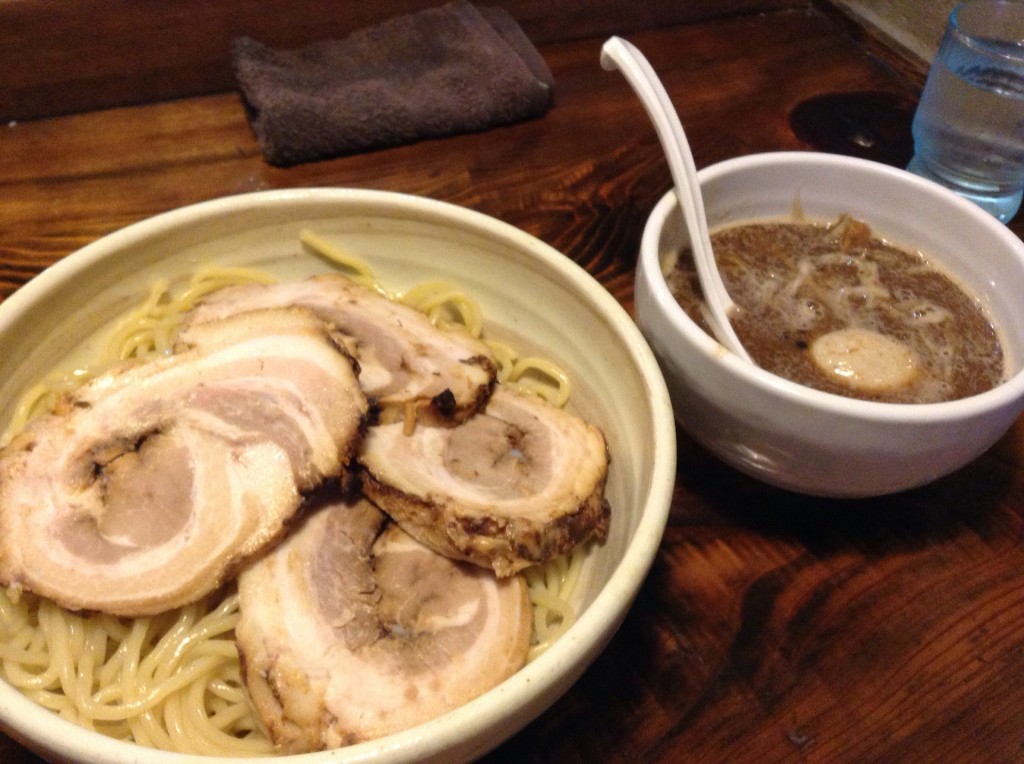
One of the many temptations in Japan, tsukemen – one of my favorite dishes
While my job at Mercedes Benz R&D was only classed as an ‘internship’ don’t let that fool you, it was in every sense of the word a proper nine to five (well 9:30-18:00 to be exact). Also while it was a gaishikei (foreign company in Japan) many of the staff were Japanese and it still had a lot of the Japanese workplace culture. Essentially as discussed in Alcohol and Work in Japan, there was a LOT of chances to drink (thankful none of that feeling of duty or responsibility stuff though!).
There would generally be one work related drinking/eating binge a week. The most common place for this being an izakaya (Japanese pub/bar). Also another weekday and Saturday would be spent doing the same with old university friends or fellow gaijin (foreigners). More than my health this would affect my wallet the most. While working ‘full time’ I was on half what a proper employee would get doing my work. This meant on nights when I was making my own dinner it would generally be cheap, filling high carb food (pasta, yakisoba, chilli etc.).
Below is a typical salaryman’s order at an izakaya during one of these nomikai. Clicking on the food will open a separate window to google images with said dish.
1. Karage – Fried chicken! It is soooooo good. I never ate much KFC in the UK but love fried chicken. In most Japanese izakaya it is relatively cheap and great group food.
2. Furaidopoteto – Fried potatoes (sure you figured that out by yourselves). The good old chip.Probably a standard in most countries. Rather than the UK ‘fat’ chip, they are more like the thin french fries you find McDs but crispier. Also you can often get cheese and garlic flavor, it is delicious
3. Yakitori – Chargrilled chicken. Essentially there are a range of different kind of kushi (something cooked on a skewer) it can be liver, chicken, beef etc. and is flavored with either salt or tare source. These kushi are great for sharing also, the most popular being yakitori.
4. Gyouza – Chinese dumpling stuffed with pork and veg, often fried (yaki gyouza) but can be boiled (mizu gyouza). Taste amazing with beer and probably my personal favourite out of the lot.
5. Edamame – Green soybeans.When you enter an izakaya you will often be given otohshi which is like a compulsory appetizer (kinda like seating charge but this give you something to to eat too). Often this otoshi will be edamame that are lightly salted and go great with beer!
6. Yakisoba – Fried soba. The fried soba being cooked with onions, ginger, meat and Yakisoba sauce. It is very hard to fail at making Yakisoba but they taste mighty fine. Very popular mid nomikai grub.
.png)
An example of a page from the menu of a typical Izakaya – You actually order on this touch screen device, it’s the future!
In February when my sister came to visit (Hi sis!) I was probably at the heaviest I had ever been. I also felt pretty damn rubbish. Waking up in the morning took more willpower than I need when learning all the Joyokanji (2,136 common use kanji). I was also drinking pretty much every night. My sister was only here for 10 days and spent every evening with me, meeting with work people and friends, but after the 10 nights she told me how physically and mentally draining it all had been. While she went back after to the UK after 10 days, I was stuck in the salaryman diet loop. A loop that was about to get much worse.
Before entering my company in April I had managed to improve my lifestyle slightly. I had taken up running again (soon followed by losing another toe nail!) and due to lack of money limited my drinking significantly. Though no means fit I was in better shape than I was in February.
Entering the company as the only foreigner in April I knew that I was in a sink or swim situation. I could take the easy road and just keep to myself, do the loner thing and use the ‘gaijin excuse’ (excuse of being a foreigner and so not knowing better) if I didn’t understand or want to do something. While easy, this would have been pretty dumb and self destructive in the long run.
Instead I knew I would have to make an effort to be ‘involved’ NOT use being ‘a gaijin‘ as being an excuse in not helping out during presentations or event organization. Essentially I needed to be a ‘bro’ and make friends. 25 of the 33 people that joined the company with me were guys, and after 4 years at University and 6 months at Mercedes Benz R&D, the only way I knew how to be buddy buddy with guys and show that I was a bro…..was to drink. And oh did we drink.
In the 2 months of training we had, I witnessed more people throw up, pass out and power through lectures with a brain crushing hangers than I did in my 4 total years at University. I generally being one of the above also. The plus side being that I had succeeded in becoming one of the ‘bros’, I was in the uchi (in group) and actually loved all my douki (people who joined company at the same time as me). They were and are great people. But damn, I was happy when those two months finally ended.
A typical night would entail:
++++++++++
Nomikai (Food typical being the dishes mentioned earlier)
Nijikai (Second party, much like the first but more of a focus on alcohol than food)
Ramen (In England when we have too much to drink and want to soak some of that alcohol up we have a kebab. In Japan, you have ramen. If you ever thought it was hard eating a kebab when you are pissed out of you face, trying eating ramen with chopsticks. It’s not fun.)
– If we were feeling particularly adventurous or missed the train home –
All nighter possibly at Karaoke or other dingy place
Morning MacDs, Donburi (some rice with food on top, which is generally slice strips of beef) or Ramen again. This is some heavy food to help the recover and soak some more of that up before you have to be in the office by 08:30.
++++++++++
Now this is the case of young, new salarymen aged around 21, but even when working in a proper department with senior managers etc. the above formula pretty much applies except that it ends at nijikai.
The major difference I found between a veteran salaryman (someone who has been working for a few years and if the dictionary example of THE salaryman and so had the typical salaryman diet) is what they have for lunch. The lunch for most salarymen being a pretty hefty meal. A lot of big companies (such as the one that our friend Tokyo Joe is working at) will have a shokudou (canteen) which at least will mean that some sort of healthy meal provided if chosen. In my company where there is no shokudou and means unless you bring a bento (lunchbox) you will be eating out, the typical salaryman lunch will consist of either one of the following (most shokudou have the same food):
+ Men (noodles) – Ok so noodles are big in Japan, hell they are big in Asia! There are many kinds the main being udon, soba and ramen. They come in many different soup bases miso, tonkatsu, shouyu etc. Also as well as them coming in just one bowl with soup there is also tsukemen where the noodles are separate to the soup, which you dip the noodles into before eating. It is as fun as it sounds! It’s like playing with food, I love it.
+ Curry – Some say curry is actually the most popular food in Japan. It is loved by men everywhere. Proppa grub that is general reasonably priced. But as mentioned earlier it isn’t so much like an India or thai curry than it is like a stew. Often in traditional home made Japanese curries you will have potatoes and carrots in it. Eaten out it will generally a nice big serving of rich curry sauce, the hotness to your liking, beef or other meat and rice.
+ Donburi – It is not only often eaten after a night out to soak up alcohol, but also eaten by millions at lunch. Fast, cheap and damn nice. Across Japan there are three major donburi chains and come dinner time they are full of salarymen.
+ Chuuka (Chinese food) – kinda feel bad for putting Chinese food as a’meal’ as there are so many kinds. Probably the most popular being chahan (fried rice), some kind of men or teishoku (set meal). There is much variety in Chinese food and is often cheap and filling.
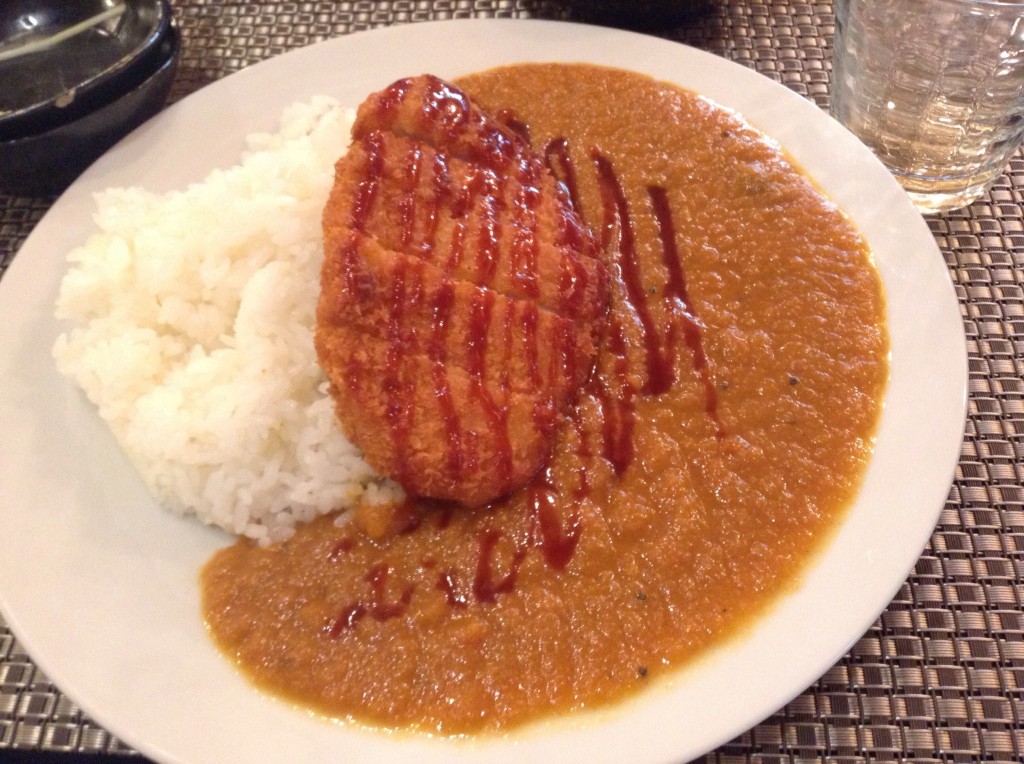
Example of the Japanese curry I would often eat during lunch
All very substantial heavy meals (enough to see them through the next grueling hours of work and god knows how many hours of unnecessary over time), apart for the noodles all other meals will come with rice too (though my friends often order some plain rice to go with their noodles!) It is a far cry from the meal I use to have for lunch when I worked back in the UK, which was a sandwich and some fruit! Yes the salaryman lunch is very high calorie indeed.
It will not surprise you that day after day of consuming heavily processed foods, sugars, grains, deep-fried foods, alcohol, caffeine, cigarettes, which make up around 90% of the salaryman diet has a pretty big toll on the body. You would be surprised how many people seem to get ill and come in a mask. Many of the smokers are also hocking their brains out every 5 minutes, it is a beautiful sound. Did I mention that it is still OK to smoke indoors in most of the places in Japan, so you can enjoy some second hand smoke with you karage, yummy.
In Tokyo Joe’s company where the drinking and binges are a lot more extreme and it is not unheard of for people to have heart attacks. The shocking thing being that though someone may have experienced a heart attack and had surgery they will still be present at the nomikai chugging it back with everyone else.
Here at WIJ we have all lived this salaryman diet at varying degrees over the past year. The effects it had on me personally were not pretty, I was the heaviest I had been and was drinking a lot more than was sensible. Imagine ‘binge’ drinking but it being done 3-4 times a week. The only way I managed to avoid not completely ballooning was through running and cycling around 60 miles a month. That didn’t change the fact that I still felt bloated, tired and a little bit depressed if I didn’t have a beer in my hand.
The Japanese diet is often regarded as one of the best in the world. So many books have been written on how to stay healthy and slim by ‘eating Japanese’. The average OL (Office Lady) and family diet (ie. mum and kids) is amazing.
The anti-demon to this though is the salaryman diet. Often un-seen from the outside world and not given much thought, because it just the way things are. The only thing keeping it at bay is the fact that Japan is such an image conscious country and that outside of the salaryman diet, people are relatively active and healthy. Riding a train in Tokyo you will also see the empty eyed, pale skin and often sleeping salarymen trudging along to their workplace. Sacrificing their health to keep the gears of Japan’s economy turning.
As with most things there is always a choice, a solution, a golden ray of hope for those that are willing to take the plunge. After living like this for a year I decided to flip my own diet around and get out of the salaryman diet spiral. I now have lots of energy and feel great. Watch this space as there will be a future post about this.
In the mean time, stay healthy people!
*Those that fancy reading some more about the Japanese diet, particularly that of Salarymen and can read Japanese. Check out this survey that was done by the Tokyo Metropolitan Government about the eating habits of around 500 people (male and female from all ages). Among other things it shows that only 30% of males either have their lunch in the work canteen or somewhere not classed as ‘eating out’ which is probably bento.
